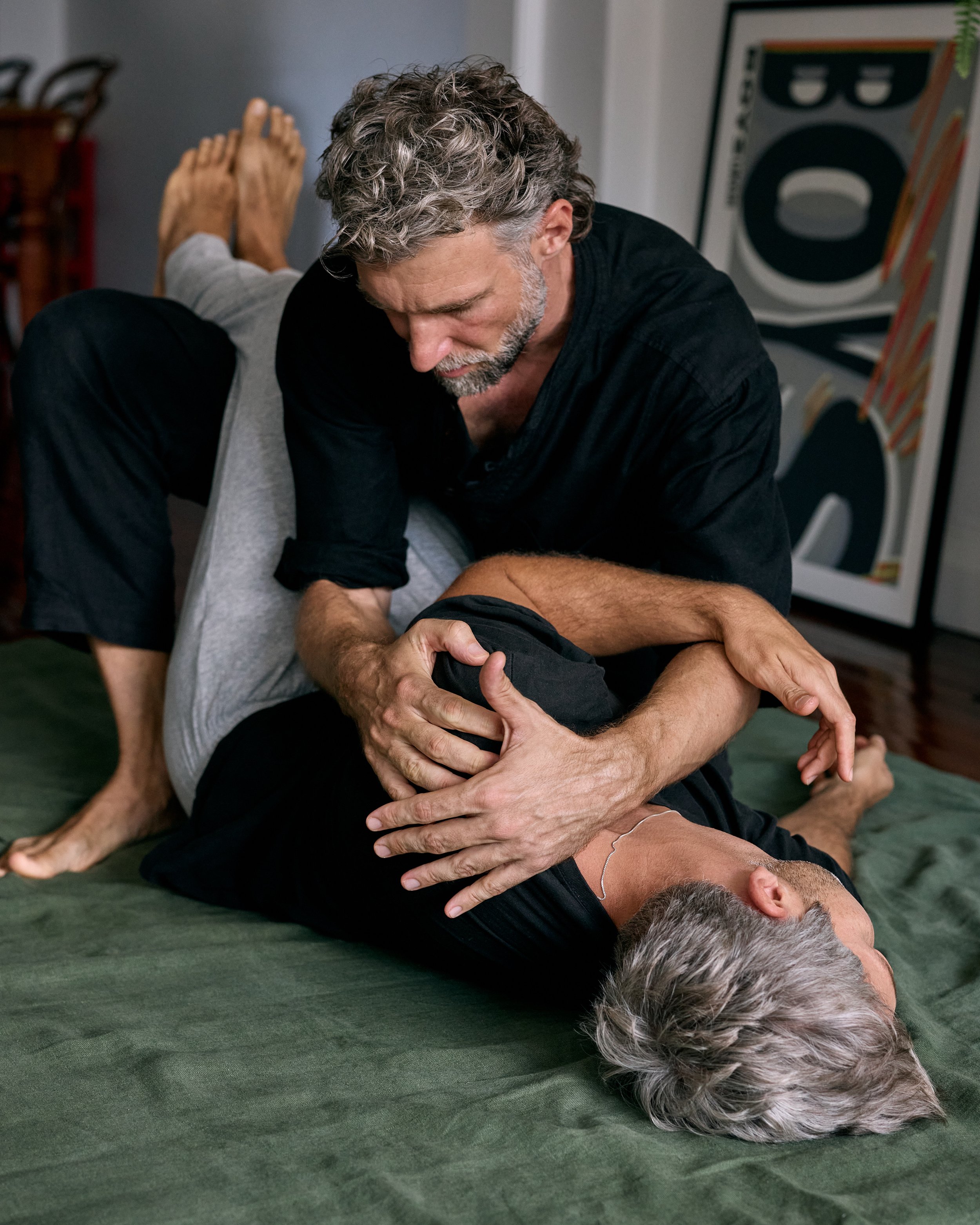
What is ZenThai Shiatsu?
-
The challenges that we face in our daily life often create imbalances in our bodies and minds. These can manifest in many ways. We feel pain in muscles, joints and organs. We don’t sleep well, or may have problems with digestion. We obsess over things, feeling like our minds can’t rest, or rather we procrastinate and feel chronically tired. We become anxious and overwhelmed - or find ourselves feeling nothing at all.
When out of balance, it becomes difficult for our bodies to self-regulate and heal. Our blood, our energy and the signals from our nervous system can’t circulate freely. In the Eastern tradition, massage is a way to restore that lost balance.
-
ZenThai Shiatsu is a creative and dynamic form of bodywork, inspired by three disciplines: Zen Shiatsu, traditional Thai Massage and osteopathy.
Zen is about observing and constantly tailoring the session to what your body is telling us it needs. It is the opportunity for you, the receiver, to listen to the signals of your body and mind. Thai is about mobilisation - the pressure, stretches, twists and manipulation of deep tissue. Osteopathy links the musculoskeletal disfunctions with underlying problems in other bodily systems, aiming to restore balance holistically.
Through mindful, intentional touch, applying pressure, stretching and rhythmic movement, ZenThai Shiatsu helps restore this lost balance. In effect it alleviates pain, improves mobility, blood circulation and supports deep relaxation.
-
Here are some unique technical features of ZenThai Shiatsu.
It happens on a large and comfortable mat, rather than on a massage table. It is because I will often use my body and its weight to apply the right pressure and stretch. You will find yourself in different positions during the session (on your back, on your belly, on your side, or seated). This would not be possible on a typical massage table.
It is a pressure-based massage. Instead of using strokes and gliding moves, I apply gradual pressure on sections of your body, adjusting the intensity. Consequently there’s no need to use oils.
You stay clothed. First, we don’t use oils and second, clothes prevent skin burns and improve the grip when we move into stretches and twists. What you wear depends on your personal preferences and the season. In warmer months, a stretchy t-shirt and shorts are enough. In the winter, you may need a comfy long-sleeve top, long pants and a pair of warm socks.
